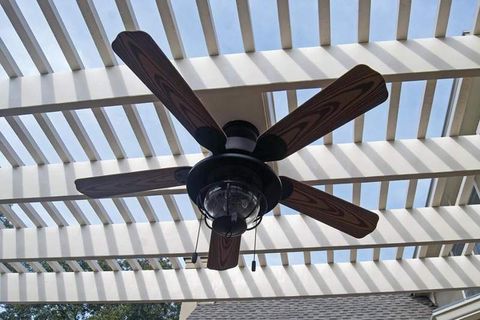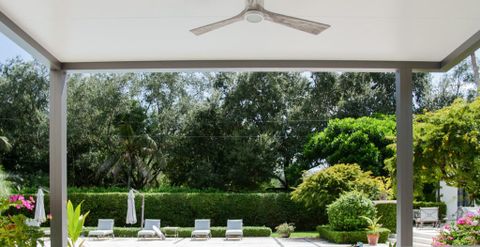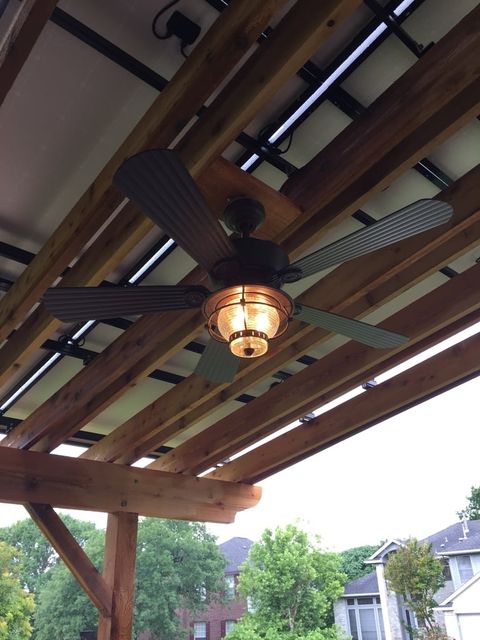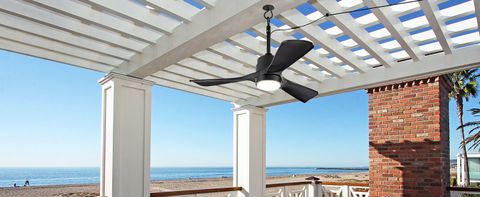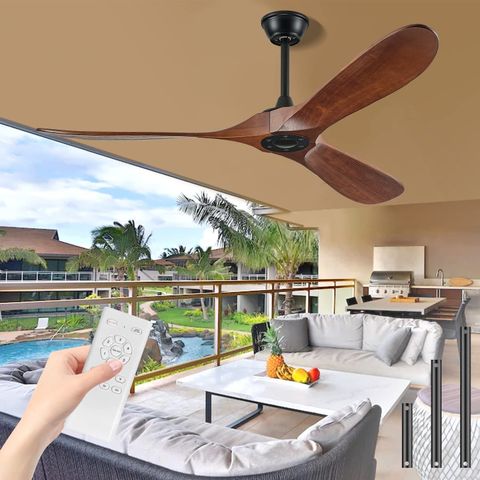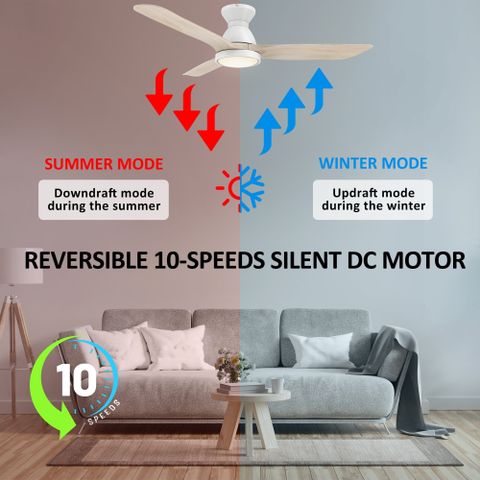Picture this: you’re relaxing under your pergola on a warm summer evening, the gentle breeze carrying the scent of blooming flowers. Now imagine adding the perfect outdoor ceiling fan to complete the scene. But how do you choose the right one? It’s not just about picking something that looks good – it’s about finding a fan that works well in your specific outdoor environment.
Outdoor living spaces have become increasingly popular, and pergolas serve as the perfect foundation for creating comfortable, functional areas. However, the right ceiling fan can make all the difference between a pleasant outdoor experience and one that feels uncomfortable. Choosing the correct outdoor ceiling fan for your pergola requires understanding several important factors. From weather resistance to blade size, each element plays a crucial role in ensuring both performance and longevity. This guide will walk you through everything you need to know to make an informed decision that will enhance your outdoor living space for years to come.
Understanding Outdoor Fan Basics
Before diving into specific features, it’s important to grasp some fundamental concepts about outdoor ceiling fans. Unlike indoor fans, outdoor models must withstand various environmental conditions including rain, humidity, and temperature fluctuations. The motor and materials used are significantly different. Many outdoor fans are built with corrosion-resistant components and waterproof ratings to handle the elements. Consider that your pergola might be exposed to direct sunlight, which means the fan blades could fade over time. A quality outdoor fan should have UV-resistant coatings and materials that won’t deteriorate quickly. The mounting system also differs from indoor versions, often requiring special brackets or hardware designed for outdoor installation.
Weather Resistance and Ratings
One of the most critical aspects when selecting an outdoor ceiling fan is understanding weather protection ratings. The National Electrical Manufacturers Association (NEMA) provides standards that indicate how well equipment can handle environmental conditions. For pergolas specifically, look for fans rated NEMA 3R or higher, which means they can handle rain, sleet, and ice. Some fans even carry IP ratings like IP44 or higher, indicating protection against solid objects and water ingress. When you’re looking at pergola installations, remember that the fan isn’t just exposed to overhead elements – it’s also surrounded by open air that can bring dust, insects, and debris. Check if the fan comes with a protective cover or canopy that shields electrical connections. A well-designed outdoor fan will have sealed motors and moisture-resistant components to prevent rust and corrosion.
Size Matters: Blade Diameter and Room Dimensions
The size of your pergola directly influences the appropriate fan size you should select. Larger pergolas require bigger fans to effectively circulate air throughout the space. As a general rule, fans with 42-inch blades work best for areas 10×10 feet or larger. For smaller pergolas, 36-inch fans are usually sufficient. But it’s not just about the blade diameter – you also need to consider the ceiling height. Most outdoor fans work best when installed 8-12 feet above the ground. If your pergola has lower ceilings, look for flush-mount or low-profile options. Consider the layout of your space too. Are there pillars or furniture that might block airflow? A fan positioned correctly can dramatically improve comfort. Think about the shape of your pergola as well – rectangular spaces might benefit from a single large fan, while irregularly shaped areas might need multiple fans for even coverage.
Motor Quality and Performance Features
The heart of any ceiling fan is its motor, and this becomes especially important for outdoor use. Look for fans with DC motors rather than AC motors for better energy efficiency and quieter operation. DC motors also offer more speed control options, allowing you to adjust airflow based on weather conditions. Higher-quality motors typically last longer and perform better in varying temperatures. Many premium outdoor fans feature reversible motors that can change blade rotation direction for seasonal comfort. In winter, reversing the blades can help push warm air down from the ceiling. Some fans also include built-in lighting fixtures, which can be a nice addition for evening use. Smart fan technology allows remote control via smartphone apps, making it easy to adjust settings without getting up from your chair. These features add convenience but also increase the cost, so weigh whether they’re necessary for your needs.
Material Selection and Durability
The materials used in outdoor ceiling fans play a major role in their lifespan and appearance. Aluminum and stainless steel are common choices for outdoor applications because they resist rust and corrosion. Plastic components should be UV-stabilized to prevent fading from sun exposure. Some manufacturers use powder-coated finishes that provide additional protection against weather damage. Pay attention to the blade material specifically – aluminum blades tend to be lighter and more durable than plastic ones. However, they might be more expensive. Consider how much maintenance you’re willing to perform. Some materials require periodic cleaning and inspection, while others are more self-sufficient. Fiberglass blades are another option that offers a good balance of durability and cost. The finish of the fan should complement your pergola’s aesthetic – whether that’s brushed aluminum, bronze, or classic white. Matching the fan’s style with your overall outdoor design creates a cohesive look.
Installation Considerations and Professional Help
Installing an outdoor ceiling fan in a pergola setup can be more complex than indoor installation due to structural differences and weather exposure. You’ll need to ensure your pergola structure can support the weight of the fan plus its mounting hardware. Most outdoor ceiling fans weigh between 20-40 pounds, so check your pergola’s load capacity. The mounting bracket must be compatible with your pergola’s construction – some may require special reinforcement. Electrical considerations are also important. You’ll need a properly grounded outlet or hardwired connection. Many pergolas have limited access to electrical sources, which might require running new wiring. Some fans come with wireless remote controls to eliminate the need for electrical access near the fan itself. If you’re unsure about installation, hiring a professional electrician is often worth the investment. They can ensure proper mounting and electrical connections, preventing potential safety issues or future problems.
Choosing the right outdoor ceiling fan for your pergola is a decision that combines practicality with personal preference. By considering factors like weather resistance, size requirements, motor quality, and installation needs, you can find a fan that enhances both comfort and aesthetics. Remember that investing in a quality outdoor fan pays dividends in years of reliable service and improved outdoor enjoyment. Take time to evaluate your specific pergola space and lifestyle needs before making a purchase. Whether you prefer simple functionality or want smart home integration, there’s an outdoor ceiling fan that will meet your requirements. The key is matching the right features to your unique outdoor living situation. With proper selection and installation, your pergola can become a year-round retreat that offers both comfort and style.

